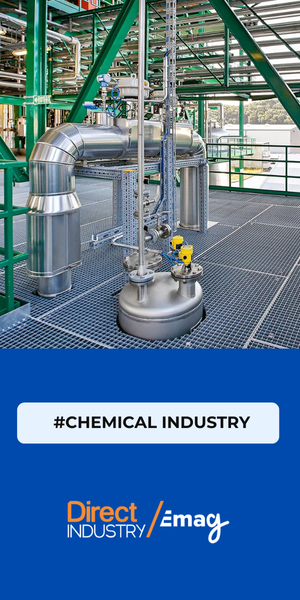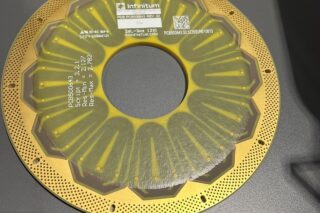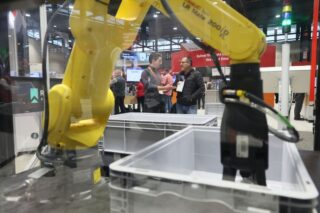When it comes to industrial operations, the management and the tracking of assets are not just a matter of organizational efficiency. They are a critical component of operational viability and competitiveness. Sheetal Pansare, CEO of Futurism Technologies, gave his insights about how IIoT can help track and manage assets.
Assets in industrial settings range from small tools to large machinery and vehicles. Each is integral to the daily operations and overall productivity of a facility. The ability to track these assets accurately ensures that they are used efficiently, maintained properly, and available when needed. This helps minimize downtime and maximize investment.
The Industrial Internet of Things (IIoT) can help leverage networked sensors and intelligent devices to revolutionize asset management. IIoT extends the connectivity and automation capabilities of the traditional Internet of Things (IoT) to industrial environments, offering a more granular level of control and insightful data analytics.
By integrating IIoT solutions, industries can monitor not only asset status in real-time but also predict maintenance needs and optimize asset utilization through advanced data analytics.

Understanding IIoT in the Context of Asset Management
The IIoT represents a subset of the broader IoT technology, tailored specifically for the industrial sector. It involves the integration of complex machinery with networked sensors and software to collect, analyze, and leverage data in real time. IIoT connects machines, workpieces, and systems, creating intelligent networks along the entire production chain that communicate and cooperate with each other autonomously.
Distinctions Between IIoT and Traditional IoT
While traditional IoT is often oriented towards consumer-related technologies such as smart home devices and wearable technology, IIoT is designed to handle the scale, complexity, and security required for industrial applications. The key differences lie in its enhanced robustness, reliability, and ability to handle vast amounts of data that industrial operations generate.
Significance of IIoT in Modern Industrial Operations
IIoT offers significant benefits for modern industrial operations, acting as a pivotal element in the digital transformation of industries. By leveraging IIoT, businesses can achieve greater operational efficiency, reduce costs, and improve their competitive edge.
IIoT enables precise monitoring and control, enhanced safety measures, and improved decision-making through data-driven insights. This technological advancement is not merely an upgrade of existing systems. It is a complete overhaul that transforms traditional industrial frameworks into smart factories and intelligent industrial ecosystems.
Technologies Powering IIoT for Asset Management
Several technologies play significant roles in IIoT asset tracking and management.
RFID (Radio-Frequency Identification)
Radio-frequency identification (RFID) is a cornerstone technology in the arsenal of IIoT asset management tools. RFID employs electromagnetic fields to automatically identify and track tags attached to objects. An RFID system consists of three components: a scanning antenna, a transceiver, and a transponder (the tag). The antenna provides the necessary radio frequency (RF) signal to transmit and receive a response from RFID tags. Tags carry information about the asset they are attached to, which can be updated or read as necessary.
RFID technology is particularly useful in industrial settings for inventory management. The reason is that it does not require line-of-sight to detect an item, unlike barcoding. This capability allows for bulk scanning of items, reducing human error and increasing efficiency. RFID can provide precise data on an asset’s location within a facility, whether it is on the move or in storage, facilitating improved asset utilization and streamlined workflows.
GPS (Global Positioning System)
The Global Positioning System (GPS) is instrumental in tracking assets that are frequently in transit, such as vehicles, shipping containers, and mobile heavy equipment. GPS provides real-time location data using satellites to calculate geographical positions. GPS tracking is crucial for industries that operate across large geographical areas and need to manage the logistics of transportation and delivery of goods and equipment.
By integrating GPS data into IIoT systems, companies can gain insights into the routes taken, stops made, and the speed of their assets. This information is vital for optimizing routes, reducing fuel consumption, and ensuring the timely delivery and maintenance of critical assets.
Other Tracking Technologies
In addition to RFID and GPS, other technologies play significant roles in IIoT asset tracking:
- Bluetooth Low Energy (BLE): BLE is a power-conserving variant of Bluetooth that provides communication over short distances. It is often used in asset tracking to monitor tools and equipment within a confined industrial environment. BLE tags are small, inexpensive, and easy to install, making them ideal for tracking non-powered assets.
- Near Field Communication (NFC): NFC enables two devices to communicate when they are within a few centimeters of each other. NFC tags are often used for asset management tasks requiring very close proximity to ensure security and control, such as in access control systems.
- Wi-Fi-based tracking: Utilizing the existing Wi-Fi infrastructure, Wi-Fi-based tracking systems can determine the location of devices based on the strength of their signal relative to multiple Wi-Fi access points. This method is particularly useful in indoor environments where GPS signals may be weak or unavailable.
These technologies collectively empower IIoT systems to offer comprehensive solutions for asset tracking and management across various environments and conditions.
Benefits of IIoT in Asset Tracking and Management
Real-Time Monitoring
One of the most prominent benefits of IIoT in asset tracking and management is the capability for real-time monitoring. This technology allows businesses to keep tabs on their assets continuously, thus significantly reducing the risks of loss or theft. Real-time tracking ensures that assets are exactly where they need to be and alerts the managers instantly if assets are moved unexpectedly or enter unauthorized areas. This level of visibility is crucial in high-value industries where asset misplacement or loss can lead to significant financial repercussions.
Improved Efficiency
IIoT greatly enhances operational efficiency through streamlined inventory management. By automating the tracking of goods and equipment, IIoT reduces the need for manual checks and the associated human errors. This automation not only speeds up operations but also reduces labor costs and minimizes the chances of errors in data entry and record-keeping. Efficient inventory management ensures that no asset is underutilized or left idle unnecessarily, optimizing the use of every piece of equipment.
Predictive Maintenance
IIoT technologies harness the power of data analytics to shift maintenance strategies from reactive to predictive. By continuously collecting data from sensors attached to machinery and other assets, IIoT systems can use predictive analytics to foresee potential breakdowns before they occur. This foresight allows maintenance teams to address issues before they lead to equipment failure, thus avoiding costly downtime and extending the lifespan of the machinery. Predictive maintenance not only saves money but also enhances safety by reducing the likelihood of equipment failure.
Enhanced Decision-Making
The integration of IIoT enables deeper data analysis, providing businesses with comprehensive insights into their asset utilization and lifecycle management. This data-driven approach supports more informed decision-making across the board. Managers can assess the performance of assets, identify trends, and make strategic decisions about asset procurement, retirement, and deployment based on solid data. Enhanced decision-making capabilities lead to better resource allocation and can significantly influence the financial and operational success of a company.
Takeaway
IIoT brings a robust suite of technologies, including RFID, GPS, BLE, NFC, and Wi-Fi-based tracking, to the forefront of industrial operations, providing unprecedented real-time monitoring and data analytics capabilities.
Real-time tracking enhances security and asset utilization by providing immediate data on the whereabouts and status of assets. Improved efficiency reduces manual errors and operational costs through automated inventory management. Predictive maintenance minimizes downtime and extends asset lifespans by anticipating and addressing potential failures before they occur. Enhanced decision-making is facilitated by deep analytics, which allows for better resource management and strategic planning.
Embracing IIoT is not merely a technological upgrade—it is a strategic imperative to thrive in today’s competitive and fast-evolving marketplace. The integration of IIoT into asset management processes not only boosts operational efficiency but also strengthens the foundation for innovation and sustainable growth.






![Image [BUYING GUIDE] How to Choose the Right Industrial Robot?](/wp-content/uploads/sites/3/Industrial-Robot-320x213.jpg)

![Image [Buying Guide] How to Choose the Right Safety Shoes?](/wp-content/uploads/sites/3/Safety-Shoes-320x213.jpg)


![Image [Buying Guide] How to Choose the Right AMR?](/wp-content/uploads/sites/3/AMR-320x213.jpg)